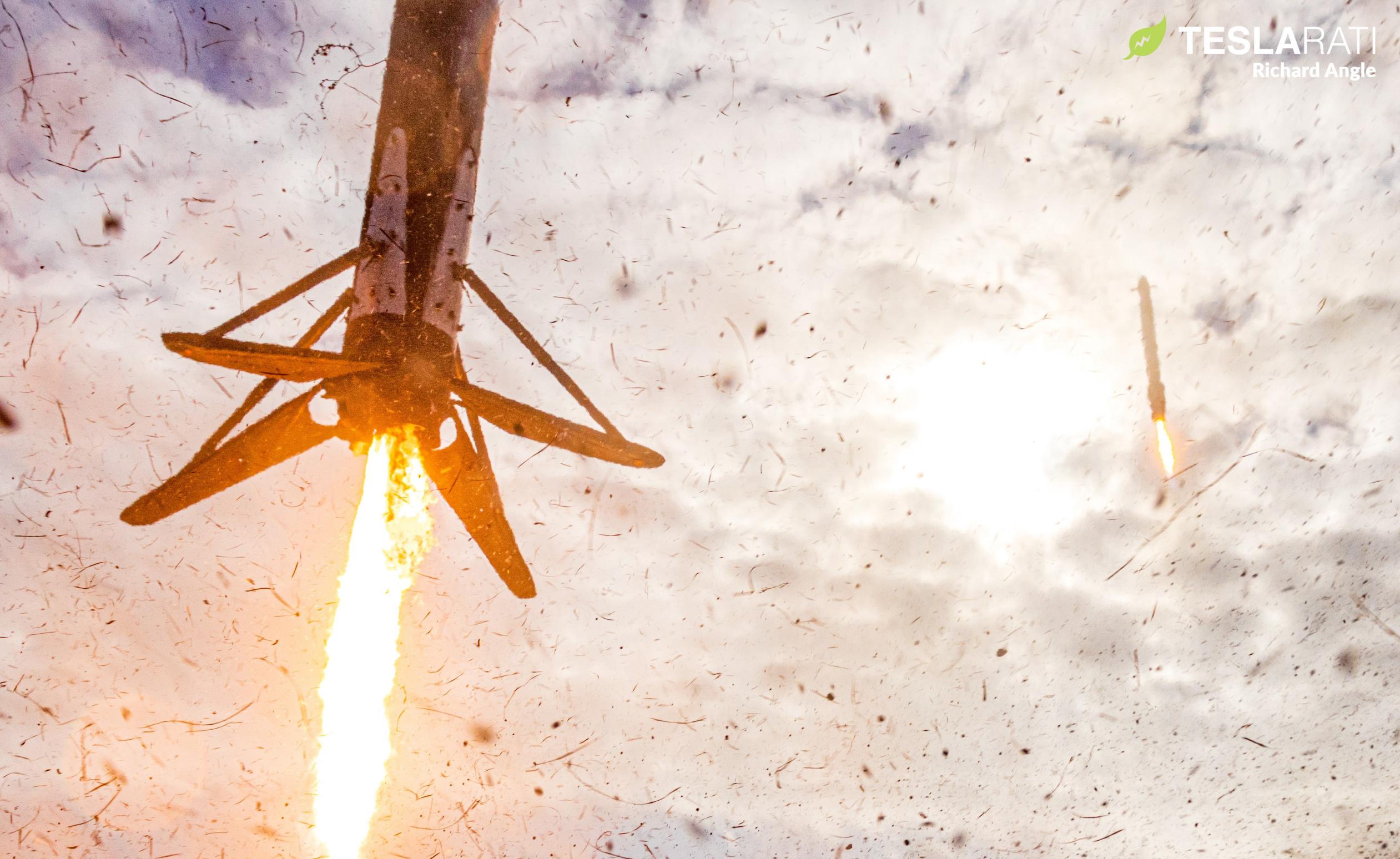
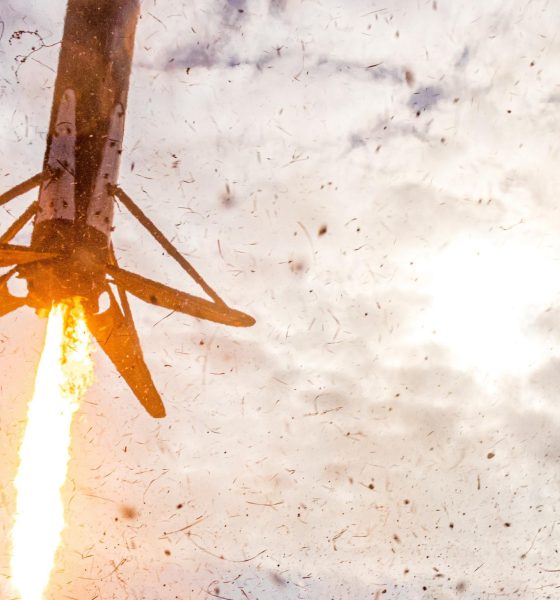
News
SpaceX’s Falcon Heavy rocket back in action after a three-year hiatus
Update: The US Space Systems Command says that SpaceX’s first direct launch to geosynchronous orbit was a “simply outstanding” success, safely deploying several satellites more than 36,000 kilometers (~22,400 mi) above the Earth’s surface.
The success of the US Space Force’s USSF-44 mission means that SpaceX’s Falcon Heavy rocket is now one of just a handful of operational rockets in the world that has demonstrated the ability to launch satellites directly to geosynchronous orbit. More importantly, it’s one of just three US rockets with that established capability. The other two rockets – ULA’s Atlas V and Delta IV – will cease to be available for US military missions by the end of 2023, meaning that Falcon Heavy may briefly become the only rocket in the world able to launch certain US military missions until ULA’s next-generation Vulcan rocket is ready to prove itself.
SpaceX’s Falcon Heavy has continued a streak of successful dual-booster landings during its first attempted launch directly to geosynchronous orbit, a mission that was also the rocket’s first launch in more than three years.
Known as USSF-44 and initially scheduled to launch more than two years ago, the US Space Force mission finally lifted off on November 1st, 2022 after relentless payload delays. By mid-2021, the hardware required for SpaceX’s first Falcon Heavy launch since June 2019 – mainly three new first-stage boosters – had finished qualification testing and been shipped to Florida in anticipation of a late-2021 or early-2022 launch. That launch never came.
Only in November 2022 did most or all of USSF-44’s payloads finally come together, resulting in a gap of more than 40 months between Falcon Heavy launches as practically every other payload assigned to the rocket in the interim experience their own significant delays. Regardless, on November 1st, Falcon Heavy lifted off for the fourth time and performed flawlessly for the nine minutes the US Space Force allowed SpaceX’s webcast to continue.
Over the course of those nine minutes, Falcon Heavy’s twin side boosters – both flying for the first time – helped send the rest of the rocket on its way to space before separating from the center core, upper stage, and payload to boost back towards the Florida coast. Less than eight minutes after liftoff, they safely touched down seconds apart at SpaceX’s LZ-1 and LZ-2 landing zones. Lacking grid fins or landing legs, Falcon Heavy’s intentionally-expendable center core (middle booster) continued burning for another 90 seconds and only separated from the upper stage after reaching a speed of almost four kilometers per second (8,900 mph) – a new record for a SpaceX rocket booster.
The center core, B1066, was likely obliterated when it reentered Earth’s atmosphere traveling at approximately 50% of orbital velocity. Side boosters B1064 and B1065, however, will be rapidly refurbished for a “future US Space Force mission” that SpaceX – perhaps incorrectly – says could follow USSF-44 as early as “later this year.” Unless SpaceX has received an additional USSF launch contract in secret, the company’s next USSF mission appears to be USSF-67, which the US Space Systems Command reported could launch as early as January 2023 in their latest press release [PDF]. USSF-44 and USSF-67 are technically set to launch in the same US fiscal year but not the same calendar year.
USSF-44 is SpaceX’s first direct geosynchronous launch, meaning that Falcon Heavy is attempting to deliver the US military’s payloads to a circular geosynchronous orbit (GEO) approximately 36,000 kilometers (~22,400 mi) above Earth’s surface. “Geosynchronous” refers to the fact that a spacecraft’s orbital velocity matches Earth’s rotational velocity at that altitude, making it a popular destination for communications and Earth observation satellites that want to observe the same region of Earth all the time. Ordinarily, to simplify the rocket’s job, most GEO-bound satellites are launched into an elliptical geosynchronous or geostationary transfer orbit (GTO) and use their own propulsion to circularize that ellipse.
On a direct-to-GEO launch, the rocket does almost all of the work. After reaching a parking orbit in Low Earth Orbit (LEO), Falcon Heavy’s upper stage likely completed a second burn to geosynchronous transfer orbit. Then, while conducting a complex ballet of thermal management and tank pressure maintenance to prevent all of its cryogenic liquid oxygen (LOx) from boiling into gas and its refined kerosene (RP-1) from freezing into an unusable slush, the upper stage must coast ‘uphill’ for around five or six hours.
Over that journey from an altitude of about 300 kilometers to 36,000 kilometers, in addition to the above tasks, the upper stage must also survive passes through both of Earth’s radiation belts. At apogee, Falcon S2 must reignite its Merlin Vacuum engine for around one or two minutes to reach a circular geosynchronous orbit. Payload deployment will follow and could last anywhere from a few minutes to an hour. Finally, to be a dutiful space tenant, Falcon’s upper stage must complete at least one or two more burns to reach its final destination: a graveyard orbit a few hundred kilometers above GEO.
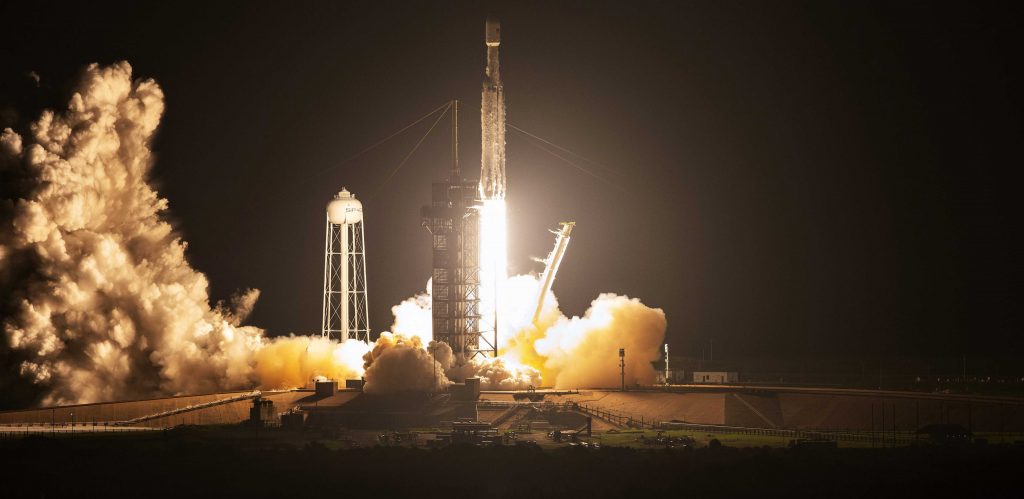
SpaceX’s third Falcon Heavy launch, a US Air Force mission called STP-2, was a partial dry-run of direct-to-GEO launch – albeit in low Earth orbit (LEO) instead of LEO, GTO, and GEO. During STP-2, Falcon Heavy’s upper stage completed four successful burns in three and a half hours. USSF-44 is significantly more challenging by most measures but not entirely outside of SpaceX’s range of experience. In addition to STP-2, Falcon 9 upper stages have conducted a few long-duration coast tests after completing unrelated primary missions.
In statements made to Spaceflight Now, the US Space Systems Command said that USSF-44’s two main payloads are a pair of propulsive kick stages and payload platforms, one – LDPE-2 – supplied by Northrop Grumman and the other – the “Shepherd Demonstration” – a mystery. LDPE-2 will reportedly carry three hosted payloads and deploy three rideshare satellites: likely two Lockheed Martin LINUSS-A cubesats and Millenium Space Systems’ TETRA-1. All three rideshare satellites are designed to demonstrate various new technologies, ranging from propulsion systems to avionics.
Rewatch SpaceX’s USSF-44 Falcon Heavy launch here.
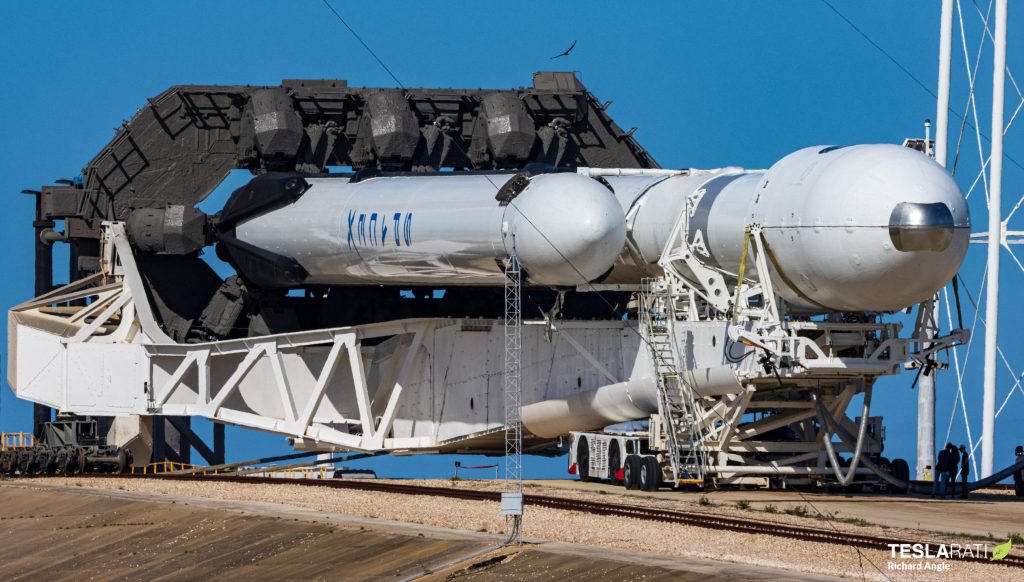
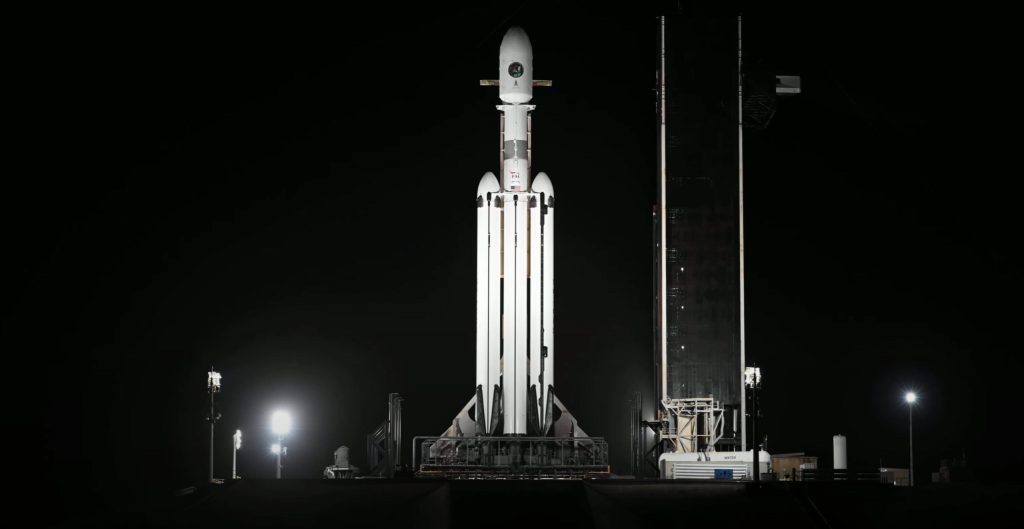
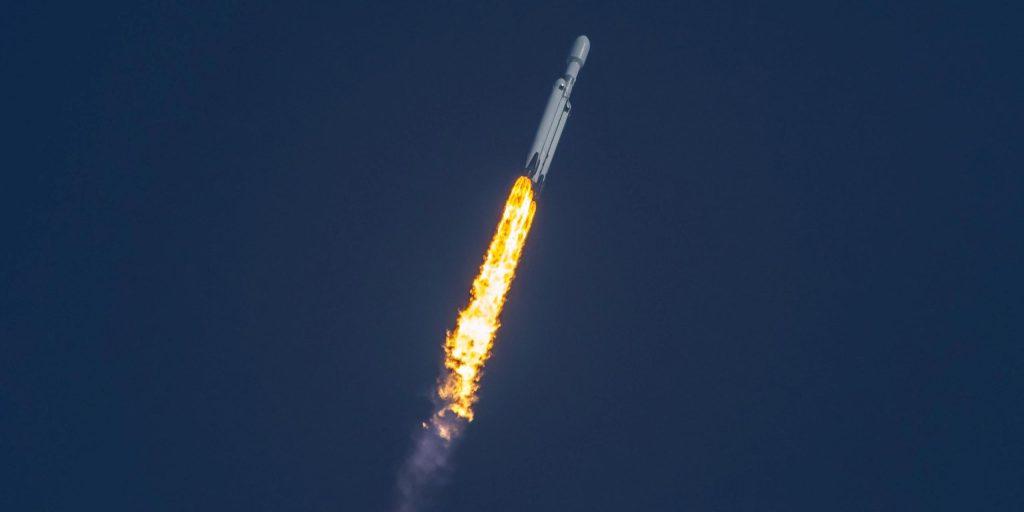
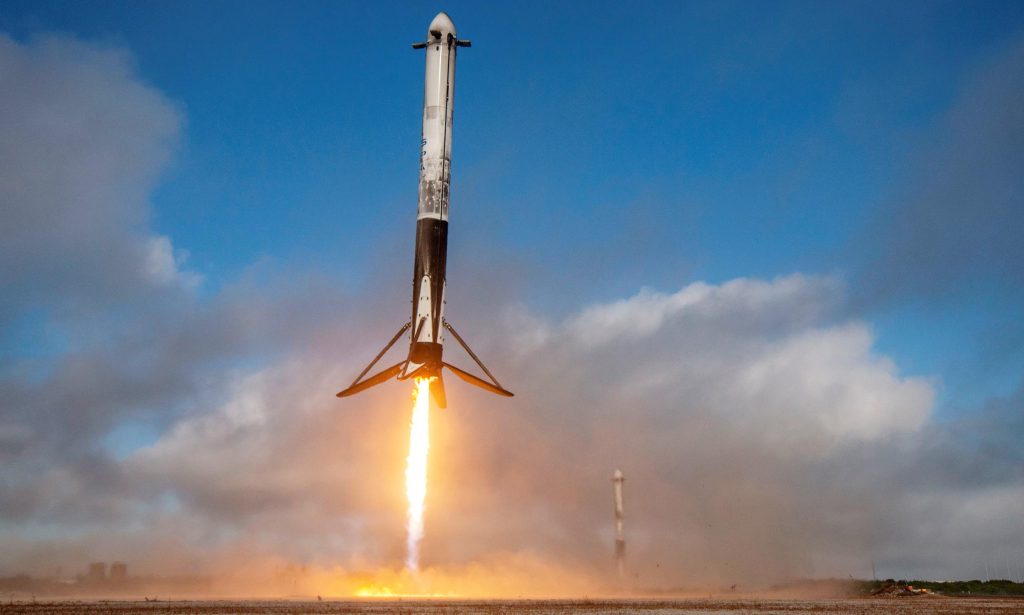

News
Tesla 2025 Holiday Update: Here’s what it includes, and what it’s missing
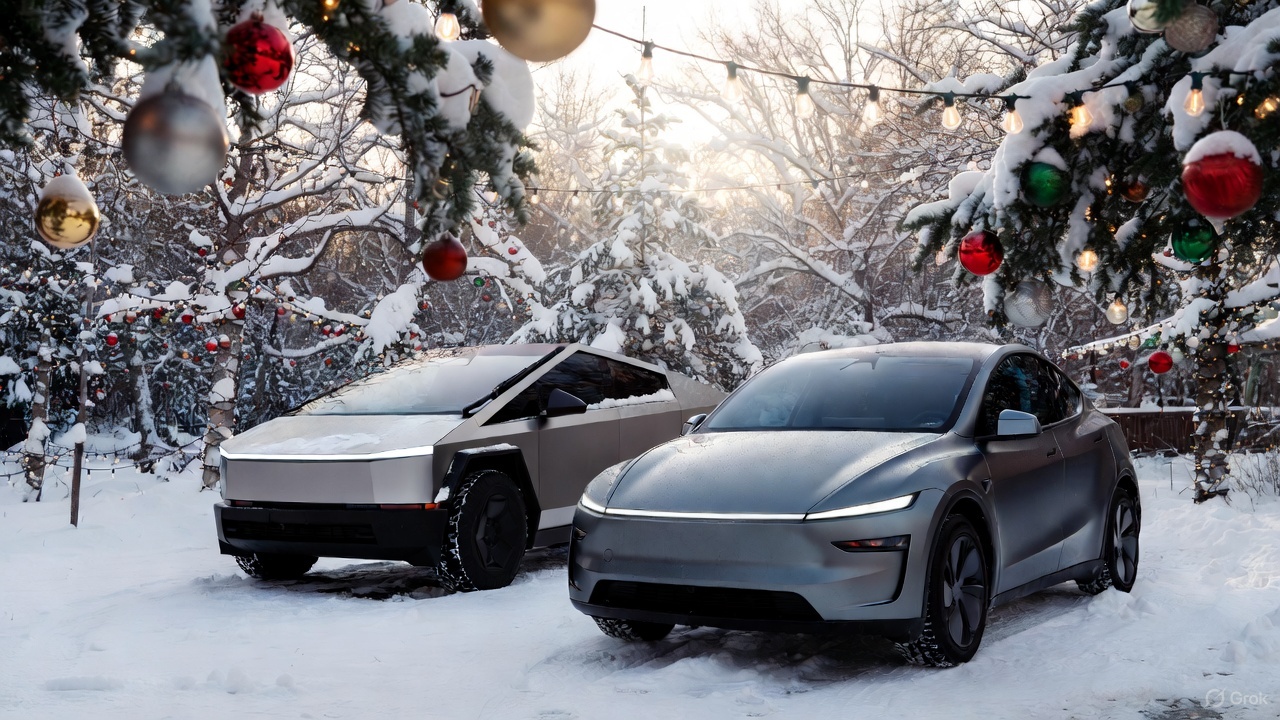
Tesla has finally announced the features for the 2025 Holiday Update, which includes a wide variety of new inclusions that are both functional and just for fun.
The new features are plentiful, but there were a handful of things we were expecting to see based on what we know. We don’t want to sound ungrateful, because there are a lot of great new things on the way with this update.
Here’s what was included:
Grok with Navigation Commands (Beta)
Grok will now have the ability to add and edit navigation destinations, which is a drastic improvement considering Tesla owners had to use their standard voice commands for this in the past.

The utilization of Grok will likely improve the navigation experience by offering some insight into your destination, including reviews and other points of interest nearby.
It will be enabled by using Grok’s “Assistant” personality.
Tesla Photobooth
“Turn your car into a photobooth! Take selfies from inside your Tesla & give yourself a makeover with fun filters, stickers, and emojis. Share with others right from the Tesla app.”
This feature will be available within the Toybox.
Dog Mode Live Activity
When using Dog Mode to keep your four-legged friend comfortable in the car, you’ll now be able to check in on them as it will share periodic snapshots of the cabin, along with live updates on temperature, battery, and climate conditions.
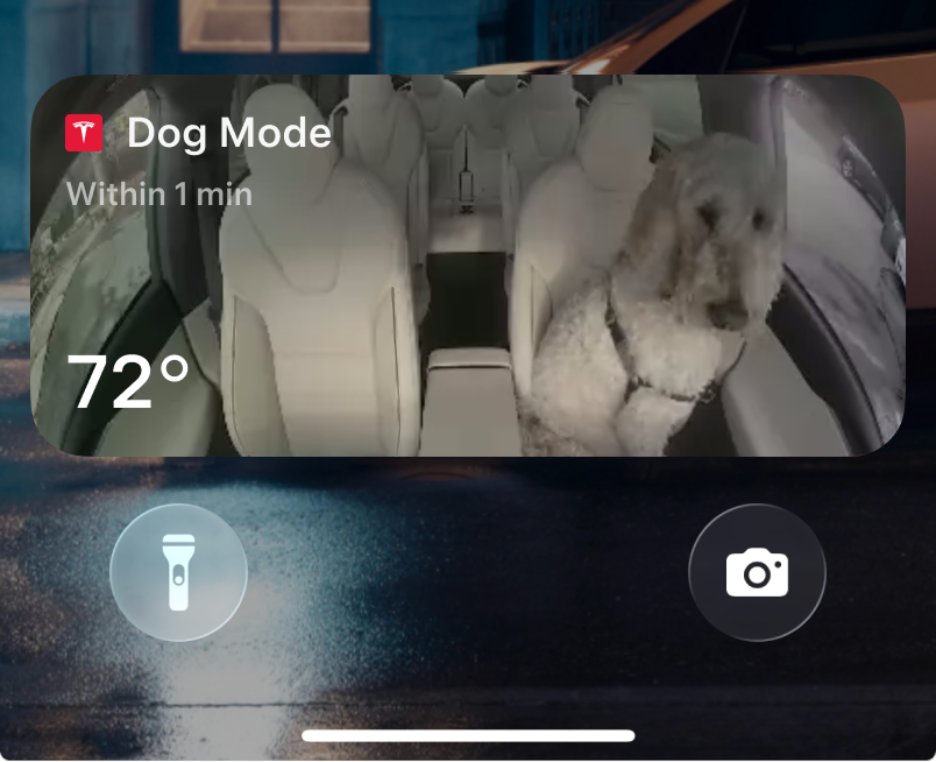
Dashcam Viewer Update
Dashcam clips are awesome, but they’re void of a lot of information, which could be useful in some instances, especially if there is an accident.
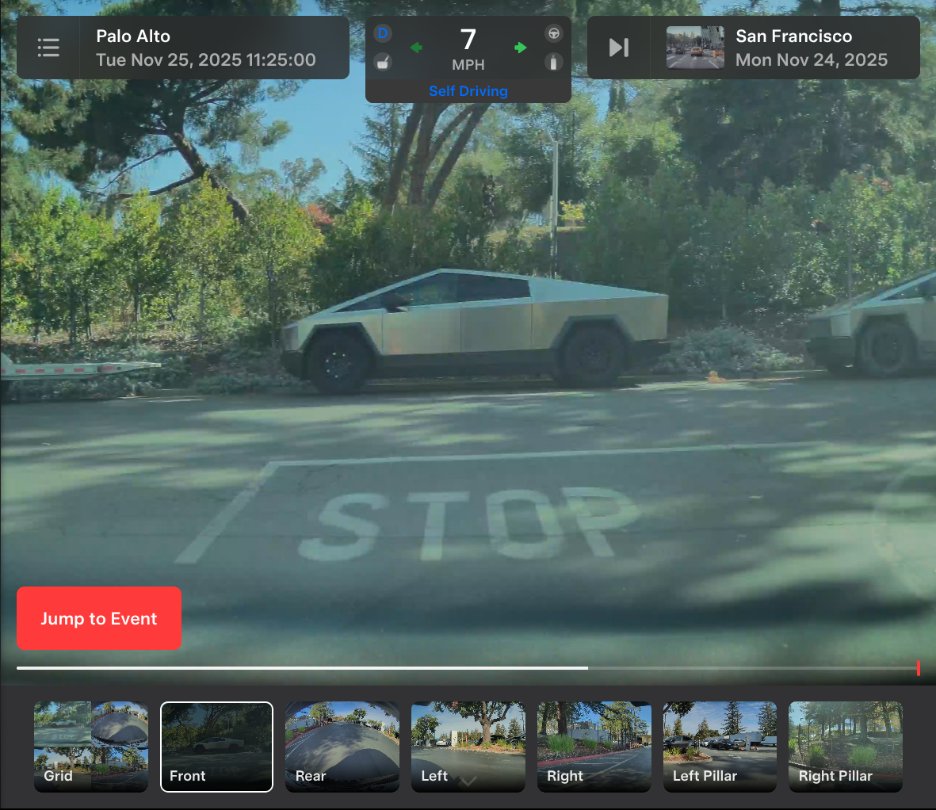
Now, there will be additional details included on each Dashcam clip, like speed, steering wheel angle, and Self-Driving state.
Santa Mode
New graphics, trees, and a lock chime are now available.
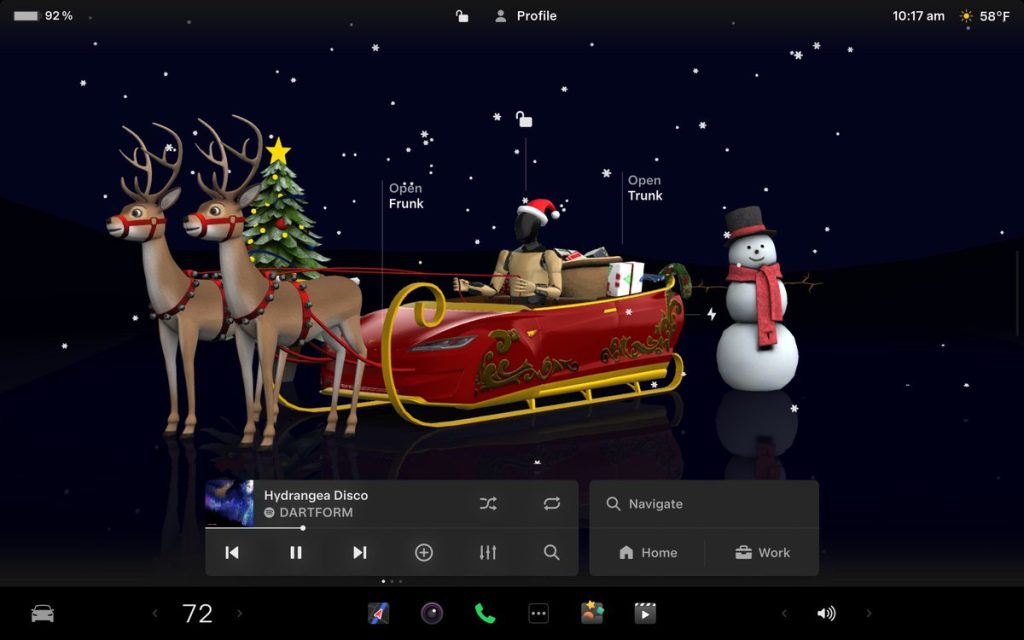
Light Show Update
A new Light Show, called Jingle Rush, will be available.
Custom Wraps and License Plates in Colorizer
Colorizer will now be known as “Paint Shop” in the Toybox. You will now be able to personalize your Tesla Avatar with window tints, custom wraps, and license plates. Preloaded designs will be available, but owners will be able to use their USB Flash Drives to create one that suits their style.
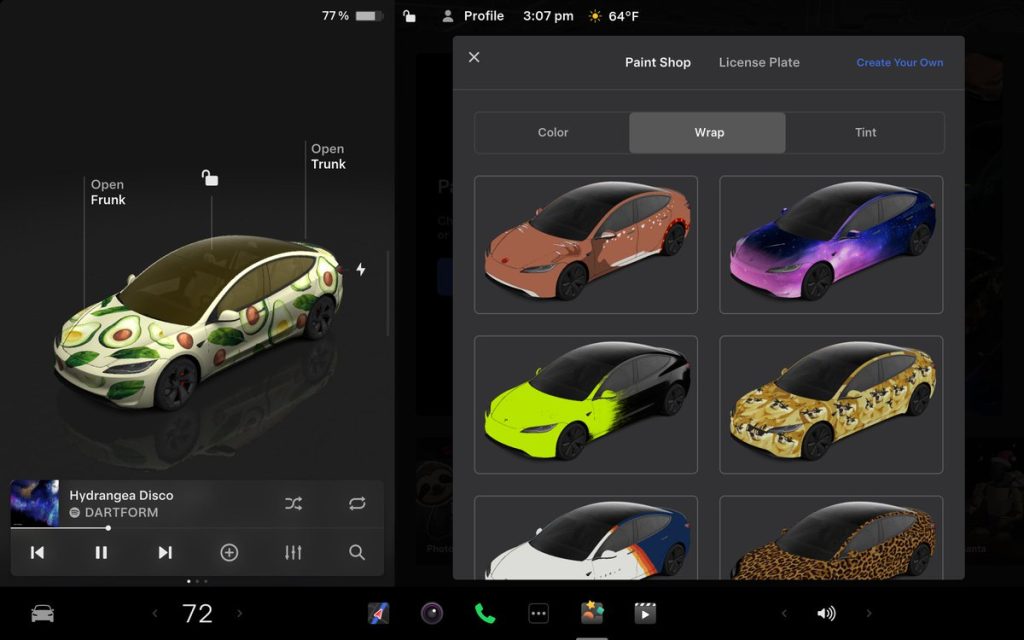
Navigation Improvements
Changing the order of your destinations will be easier through a new “Favorites” tab, and Home and Work can now be set by dropping a pin.
There will also be “Suggested Destinations,” which will be determined through recent trips and habits while parked.
Supercharger Site Map
Perhaps the most significant feature of the Holiday Update, Tesla is adding a 3D view of select Tesla Superchargers by tapping “View Site Map.”
When navigating to a location with this capability, the site layout, live occupancy, and nearby amenities will be available. Drivers will also be able to choose which stall to Supercharge.
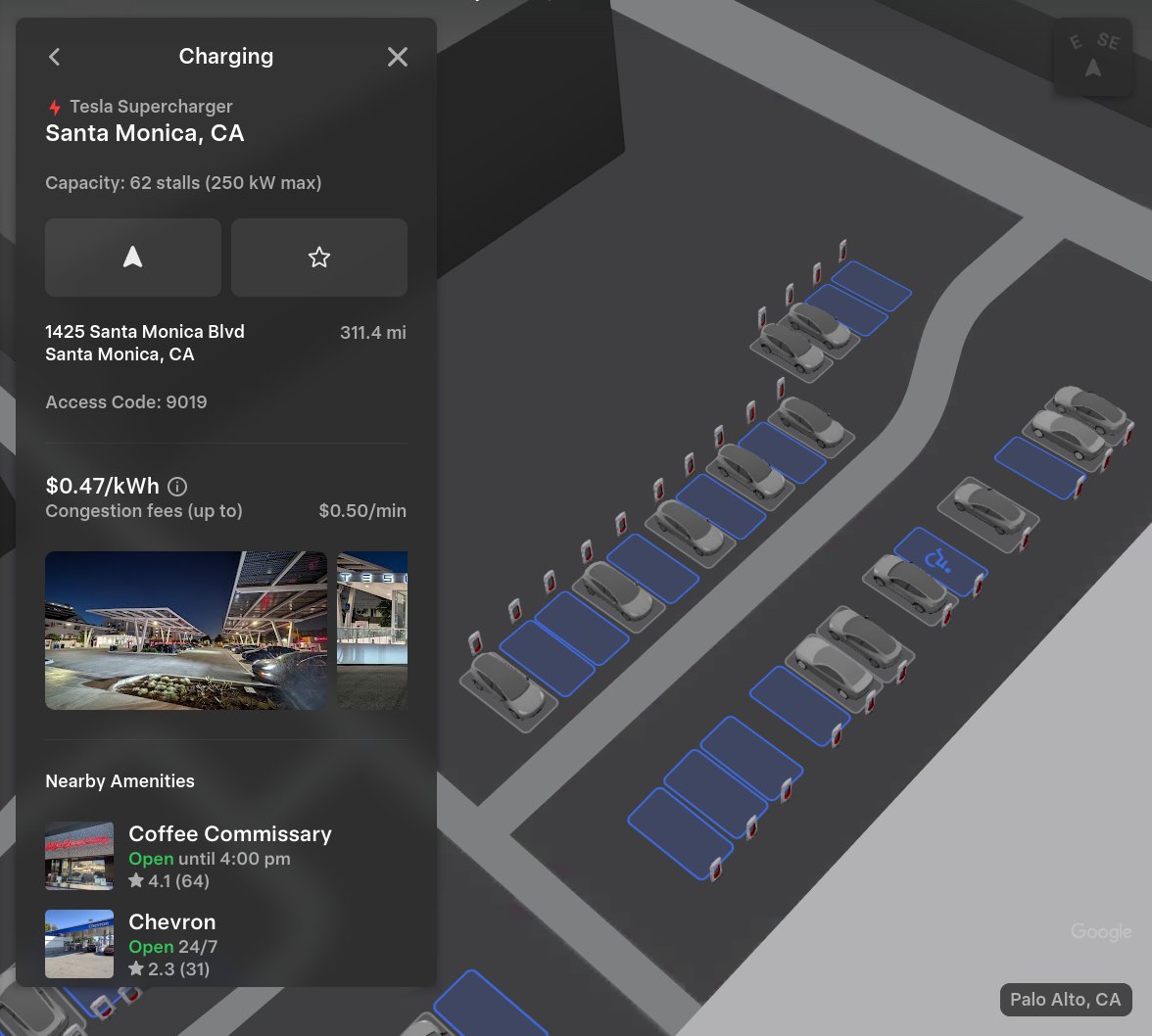
This is only available at a handful of locations currently, but it will expand to more Superchargers as it becomes more robust.
Automatic Carpool Lane Routing
Navigation will include an option to utilize carpool lanes. Your route will automatically choose the carpool lane when eligible.
Phone Left Behind Chime
If the in-car occupant detection system does not see anyone in the car and there is a phone key, or if a phone is left inside the cabin, your Tesla will chime a few seconds after the doors close.
Charge Limit Per Location
You can now save a charge limit for the current location while parked and it will be applied automatically the next time you charge there.
ISS Docking Simulator
In a SpaceX collaboration, Tesla has added this game to its in-car Arcade:
“Become an astronaut and prove your skills by docking with the International Space Station. Control & guide the rocket in this 3D docking simulator game using a set of controls based on actual interfaces used by NASA astronauts.”
Additional Improvements
-
Enable or disable wireless phone charging pads in Controls > Charging (S3XY) or Controls > Outlets & Mods (Cybertruck)
-
Add Spotify tracks to your queue right from the search screen & scroll through large Spotify playlists, albums, podcasts, audiobooks & your library seamlessly, without paging
-
Take the vibes up another level with rainbow colors during Rave Cave. Accent lights color will change along with the beats of your music. App Launcher > Toybox > Light Sync
-
Lock Sound now includes Light Cycle from Tron Mode. Toybox > Boombox > Lock Sound
What’s Missing
There are a handful of features we expected to see with the Holiday Update, but were not included.
Banish Feature
Tesla has been teasing the Banish functionality for quite a few years, but evidently, it is not quite there yet.
Banish will allow owners to get out of their vehicle at the entrance of their destination, and the car will go find a spot and park itself. Some refer to it as “Reverse Summon.”
Apple CarPlay
With all of the rumors regarding Apple CarPlay and then the evidence that Tesla was working to bring CarPlay to vehicles, we really expected it to come with the Holiday Update.
We’re not upset it’s not here, though. Tesla’s in-car UI is significantly better, at least in our opinion.
Parking Spot Selection
One of the biggest gripes about the new Arrival Features with Full Self-Driving v14 is that choosing a set parking spot is not available. This is especially frustrating for Tesla owners who rent or live in townhouse neighborhoods or apartment complexes with assigned parking.
Tesla seems to be working on this based on the release notes for v14.2, where it said future capabilities would include Parking Spot Selection.
News
Man credits Grok AI with saving his life after ER missed near-ruptured appendix
The AI flagged some of the man’s symptoms and urged him to return to the ER immediately and demand a CT scan.

A 49-year-old man has stated that xAI’s Grok ended up saving his life when the large language model identified a near-ruptured appendix that his first ER visit dismissed as acid reflux.
After being sent home from the ER, the man asked Grok to analyze his symptoms. The AI flagged some of the man’s symptoms and urged him to return immediately and demand a CT scan. The scan confirmed that something far worse than acid reflux was indeed going on.
Grok spotted what a doctor missed
In a post on Reddit, u/Tykjen noted that for 24 hours straight, he had a constant “razor-blade-level” abdominal pain that forced him into a fetal position. He had no fever or visible signs. He went to the ER, where a doctor pressed his soft belly, prescribed acid blockers, and sent him home.
The acid blockers didn’t work, and the man’s pain remained intense. He then decided to open a year-long chat he had with Grok and listed every detail that he was experiencing. The AI responded quickly. “Grok immediately flagged perforated ulcer or atypical appendicitis, told me the exact red-flag pattern I was describing, and basically said “go back right now and ask for a CT,” the man wrote in his post.
He copied Grok’s reasoning, returned to the ER, and insisted on the scan. The CT scan ultimately showed an inflamed appendix on the verge of rupture. Six hours later, the appendix was out. The man said the pain has completely vanished, and he woke up laughing under anesthesia. He was discharged the next day.
How a late-night conversation with Grok got me to demand the CT scan that saved my life from a ruptured appendix (December 2025)
byu/Tykjen ingrok
AI doctors could very well be welcomed
In the replies to his Reddit post, u/Tykjen further explained that he specifically avoided telling doctors that Grok, an AI, suggested he get a CT scan. “I did not tell them on the second visit that Grok recommended the CT scan. I had to lie. I told them my sister who’s a nurse told me to ask for the scan,” the man wrote.
One commenter noted that the use of AI in medicine will likely be welcomed, stating that “If AI could take doctors’ jobs one day, I will be happy. Doctors just don’t care anymore. It’s all a paycheck.” The Redditor replied with, “Sadly yes. That is what it felt like after the first visit. And the following night could have been my last.”
Elon Musk has been very optimistic about the potential of robots like Tesla Optimus in the medical field. Provided that they are able to achieve human-level articulation in their hands, and Tesla is able to bring down their cost through mass manufacturing, the era of AI-powered medical care could very well be closer than expected.
News
Tesla expands Model 3 lineup in Europe with most affordable variant yet
The Model 3 Standard still delivers more than 300 miles of range, potentially making it an attractive option for budget-conscious buyers.

Tesla has introduced a lower-priced Model 3 variant in Europe, expanding the lineup just two months after the vehicle’s U.S. debut. The Model 3 Standard still delivers more than 300 miles (480 km) of range, potentially making it an attractive option for budget-conscious buyers.
Tesla’s pricing strategy
The Model 3 Standard arrives as Tesla contends with declining registrations in several countries across Europe, where sales have not fully offset shifting consumer preferences. Many buyers have turned to options such as Volkswagen’s ID.3 and BYD’s Atto 3, both of which have benefited from aggressive pricing.
By removing select premium finishes and features, Tesla positioned the new Model 3 Standard as an “ultra-low cost of ownership” option of its all-electric sedan. Pricing comes in at €37,970 in Germany, NOK 330,056 in Norway, and SEK 449,990 in Sweden, depending on market. This places the Model 3 Standard well below the “premium” Model 3 trim, which starts at €45,970 in Germany.
Deliveries for the Standard model are expected to begin in the first quarter of 2026, giving Tesla an entry-level foothold in a segment that’s increasingly defined by sub-€40,000 offerings.
Tesla’s affordable vehicle push
The low-cost Model 3 follows October’s launch of a similarly positioned Model Y variant, signaling a broader shift in Tesla’s product strategy. While CEO Elon Musk has moved the company toward AI-driven initiatives such as robotaxis and humanoid robots, lower-priced vehicles remain necessary to support the company’s revenue in the near term.
Reports have indicated that Tesla previously abandoned plans for an all-new $25,000 EV, with the company opting to create cheaper versions of existing platforms instead. Analysts have flagged possible cannibalization of higher-margin models, but the move aims to counter an influx of aggressively priced entrants from China and Europe, many of which sell below $30,000. With the new Model 3 Standard, Tesla is reinforcing its volume strategy in Europe’s increasingly competitive EV landscape.








